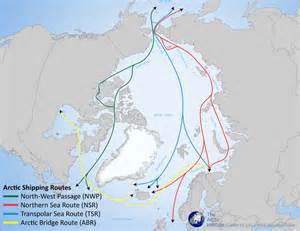The following is an excerpt from "Arctic Shipping — Commercial Opportunities and Challenges" by the Copenhagen Business School:
(FREDERIKSBERG, Denmark) — Over the last few decades the Arctic Ocean has experienced a rapid reduction in both the extent and volume of sea ice. These changes, caused by the global temperature increases, have opened up previously inaccessible shipping lanes and made possible the extraction of major natural reserves of fossil fuels. Following these changes in the Arctic environment, the last decade has seen an influx of maritime activities in the segments of liquid bulk shipping, offshoring and cruise tourism. The Arctic is one of the last frontiers on our planet and consequently the need to shed light on marine activities in and around the Arctic Ocean has arisen. The aim of this study is to address and analyze some of these challenges and opportunities in the spheres of both the private and public sector.
On the industry level previous and ongoing projects are mapped out for each of the four major maritime sectors. This involves liner shipping, bulk shipping, offshoring and cruise tourism. Additionally the possibilities and challenges are analyzed qualitatively, with a particular focus on the future prospects for each of these four sectors, from a combination of past literature and economic theory. As a part of the chapter on the opportunities for the liner shipping sector in the Arctic a quantitative economic analysis is performed. The aim of the quantitative analysis is to examine the economic feasibility of transporting containerized goods using the Northern Sea Route (NSR) between Northern Europe and East Asia as an alternative to the Suez Canal Route (SCR). More specifically the study will aim to determine when (if ever) the investment in an ice-reinforced containership operating along the NSR would be preferable to an investment in an open water vessel solely navigating the SCR.
The findings of the report conclude that major opportunities for the maritime sector exist if the ice cover on the Arctic Ocean continues to decline. The sector of dry bulk and offshoring are currently the sectors with the largest potential as the Arctic hosts and abundance of the natural resource. The results from the quantitative study on the feasibility of liner shipping across the NSR indicate that Arctic liner shipping may become economically feasible around 2040, if the ice cover continues to diminish at the present rate. The possibility of a major expansion of the maritime activities within the sectors of bulk, offshoring and liner shipping before midcentury rests upon several crucial assumptions which are all subject to major uncertainties. These uncertainties include the hazardous environmental conditions, port and infrastructure availability and high costs of operation compared to the southern shipping lanes. Additionally the Arctic Ocean lacks an international governmental and regulative framework in combination with high entry costs creates uncertainty for the maritime industry seeking to operate in and around the Arctic Ocean.
Click here to read the complete report.

